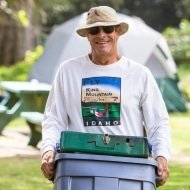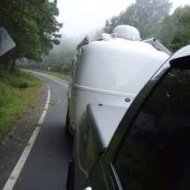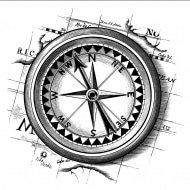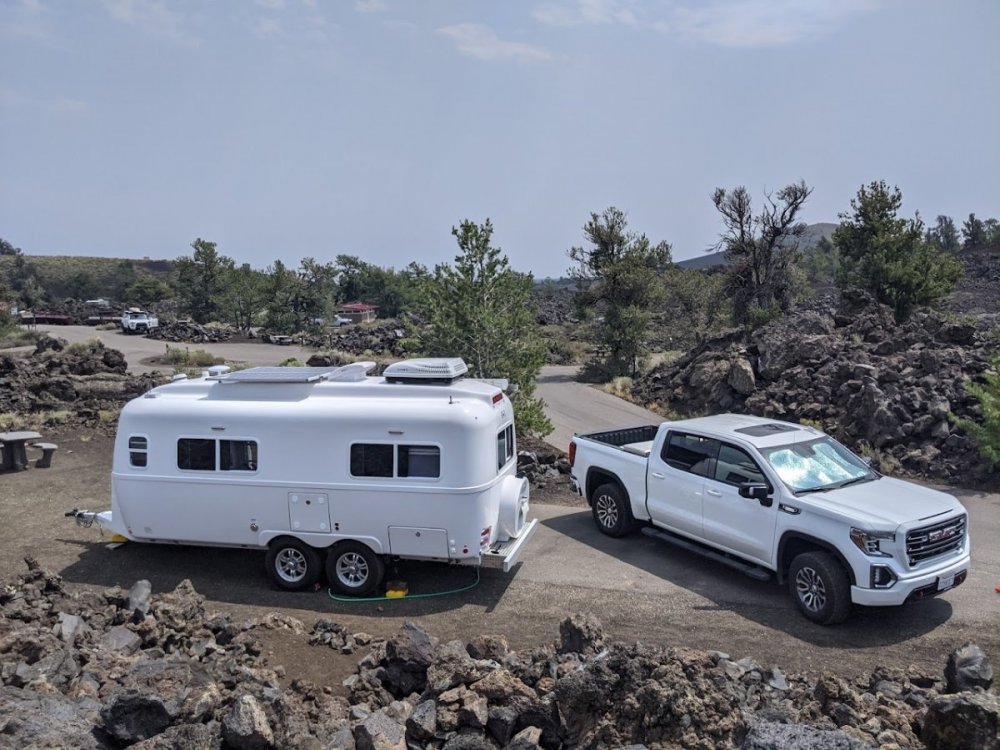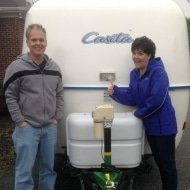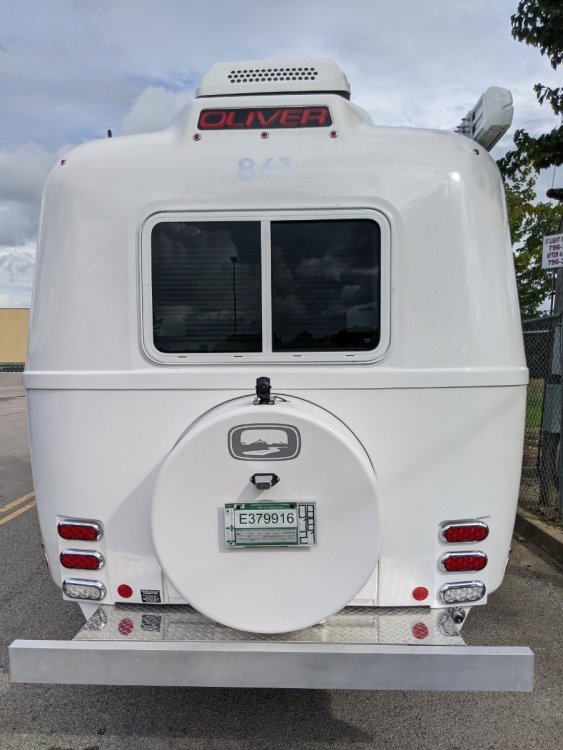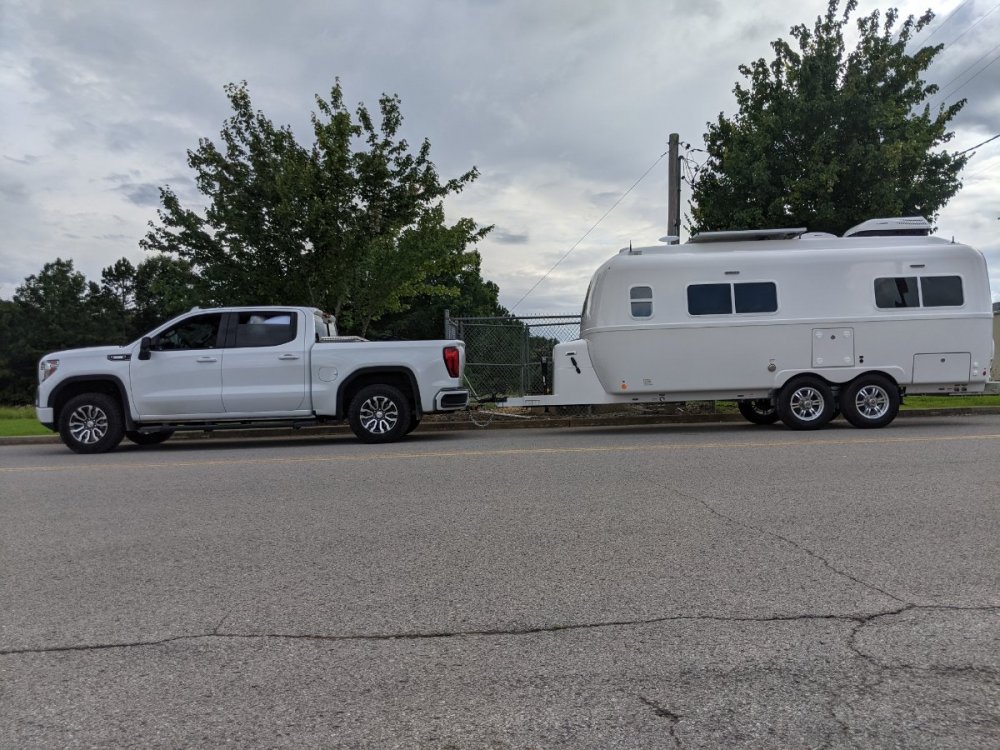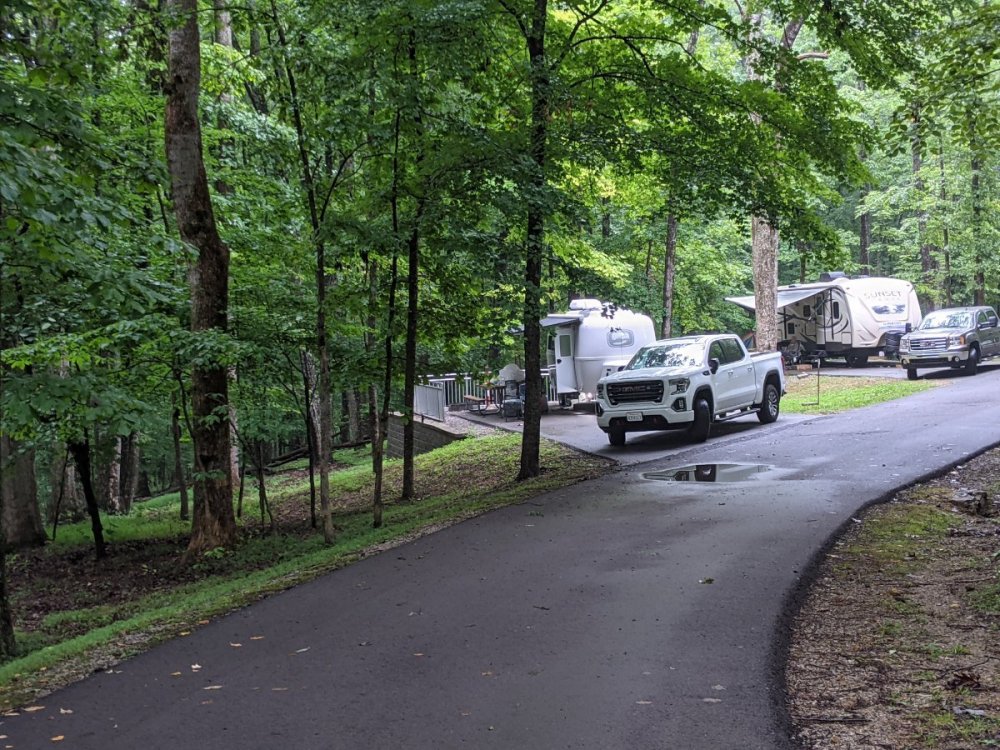Leaderboard
Popular Content
Showing content with the highest reputation on 10/05/2021 in all areas
-
Yeah, I opted for the 400ah of Lithium because we often camp for 1-2 weeks in partial to full shade here in WA, so we can run some deficit each day and still be ok for quite a few days that way before we need shore power (I'm less interested in running a generator for several hours in a row periodically). I opted in knowing that we'd rarely if ever use anything near the total stored charge in a day but for our scenario this still offers significant convenience. A week under big trees in the Olympics in May confirmed the choice, though it would have taken another week to be getting concerned about getting too low.4 points
-
3 points
-
Frank, Have you checked and added water to the shower drain trap lately? We had a very slight odor emitting from the shower drain and I poured a few cups of water down the shower drain and the odor immediately went away. Our Ollie had been sitting with the dehumidifier on and I suspect it dried out the trap allowing an odor to escape up through the shower drain. We always run the dehumidifier 24X7 so we periodically add water to the sink trap, shower trap, and galley sink trap. Might be worth a try.3 points
-
John: Very correct. The intent in my post above was directed only towards charging wire size between TV and Oliver. You bring up other equally important concepts that those wanting to use a newer TV's with smart Alternator to charge up their trailer batteries. Direct connecting TV to Trailer where you have L.A. to L.A. or AGM to AGM can be done as Raspy posted a couple of years ago (Battery to circuit breaker to Anderson Connection to Trailer batteries). The reason is that the two systems operate at the same voltage and have the same charge profiles. The voltage drop (I.E. a measure of cable resistance over its length) from the front battery to the back batteries will to some degree self limit the amount of power that could flow. This in turn provides a good measure of protection to the TV electrical systems. However mix a L.A./AGM TV to a Lithium Trailer batteries using direct connecting will really cause grief for several reasons: The internal resistance of the Lithium's is insignificant to that of the AGM or L.A. batteries. This would allow HUGH currents to flow from the TV to Ollie. If properly fused at both the TV battery terminals you would just be inconvenienced a lot. However, you are still at risk of damaging the TV charging/battery. Lithium batteries generally require a three program charge process that a direct connect does not provide. A smart TV alternator varies the output voltage to match the need. As a result, it will tend not to provide high enough voltage much of the time that the Lithium's need to get charged up. So to use your TV smart alternator to charge your lithium's, you need a current limiting device, that also acts as a "Buck Boost" transformer, and provides the computer smarts to provide the lithium's their three phase charge program. The unit you suggest appears to do all these tasks at 11 amps. A larger unit is the Victron Orion 12 -12 30. The "12 - 12 30" translates as: A 12+/- volt input providing a 12 to 14+ volt charge voltage to the lithiums, with up to 30 amps continuous (if needed), with current limiting and smart charging profiles. If you have a smaller battery bank, and drive many hours a day, a 11 amp charge system would work great and save you $$$. But we are now seeing Lithium battery banks commonly in the 200 to 300 Ah range. And some up to 630 Ah (such as Galway Gal's and the Oliver OEM Pro set up). For those, you likely would want the larger Victron Orion 12 - 12 30 charging system. Just a reminder these auto smart transformers are not 100% efficient. In the case of the Orion, it can continuously produce 30 amps at the correct voltages as needed, and is listed at 87% efficient. So that would mean your TV alternator/batteries could see up to a continuous 34.5 amp current draw. This means that there will be about 57 watts of power lost to the heat sink. So be careful where you locate this unit, and provide cooling holes/vertical space for the heat to dissipate (See JD's Posting On This Topic).3 points
-
Frank, I don't have any pictures but Lee Slusher and I swapped out Hull #050's original plastic toilet with a porcelain throne while out in Quartzsite a few years back. It was a simple matter of disconnecting the water supply line, removing a couple of bolts and lifting the toilet out. There was no "seal" as in a wax ring, just a smaller pipe exiting the bottom of the toilet and going well into a slightly larger flange on top of the black tank. Also, there was no filth as I expected. All that said, remember that the gray and black tank vents merge under the vanity and exit out the top of the trailer. If the outside vent exit is somehow blocked, theoretically sewer gases could back up and exit the shower drain. That's close enough to the toilet base to perhaps make the stink source confusing. I once had mud daubers partially close up my vent pipe. I just took the cap off and put a water hose down inside it and flushed them all back down through the drains and into the waste tanks.3 points
-
Owners; NOTE 15 OCT 202 updates are in BOLD. GJ Note that JD's 12-12 charger has an output of 11 amps. Those going to Lithium may want significantly more power. It appears that many of our owners are using or are looking at the Victron Orion 12-12 30 amp charger. Depending on your vehicle and Oliver cable run length and wire size. For my F-150 Crew Cab the length of wire needed for the upgrade was 108 feet actual (I had purchased 110) 4 AWG as suggested by BatteryCablesUSA. For the 4 AWG, you would need the Anderson 120 amp or 175 amp connector to handle the diameter of the cables. For running the two 4 AWG cables from the battery back to the firewall, across the firewall (To avoid both the Cat and the right side turbo), zigzagging back under the cab between the frame and body, and back to the hitch is an easy, but long run. Note: I chose to run two cables (Pos and Neg) and not rely on the vehicle chasis for grounding. I found Mike at BatteriesUSA to be exceptionally helpful. If you think you know your cable line measurement, I highly recommend you add another ten feet! Mike can give you the voltage drop for the various types of copper stranded cable. Specifically you can buy 4 awg welding cables or 4 awg power cables. Both are the same AWG. BUT they are not the same strand count. This can certainly impact which lugs you buy for the same 4 awg size. I chose stranded copper cable, not welding. Finally, for DC circuits you can go well above the normal 3% voltage loss. So if you are new to large DC cabling, measure twice, add an additional ten feet, and consider giving him a call at BatteriesUSA.3 points
-
2 points
-
We are impatiently waiting on the 2022 Tundra, too. Our 2016 Tundra looked fine with Ollie, too:2 points
-
GJ, great comments The beauty of the Redarc is that it doesn’t require disturbing the wiring in the TV. An exception is if you have a “smart” alternator, then you have to run a small voltage sense wire up to the TV battery positive, and also one inside the Ollie. I once wired a TV and a Nash travel trailer as you describe, I used OO welding cable. This was about 1988, there was no such thing as lithium batteries. It worked quite well, but it is NOT a mod to be taken lightly with today’s sophisticated computer controlled electrical systems. CAN Controller Area Network John Davies Spokane WA2 points
-
I agree with all that. When @Overland was first talking about 400 ah of lithium, and 600 + watts of solar, I was astounded.. in 2017. It's totally ok to order mega ah of battery power, if you'll actually use it. 340 watts of solar will not recharge it, for most folks. It depends on useage. I have 210 ah, agm, 400 watts fixed solar, 200 watts portable, 60 to 80 ah a day usage, so I sometimes have to add in generator power. I'm ok with that. But, I know what to expect, and I'm a power miser. If you want to camp, say 4 or 5 days, with just battery, and not worry, go for it, if your budget says go. Mine wouldn't, frankly. I carry a small genset, anyway, so why spend so much on battery power? 100 or 200 ah lithium would be lux for me. As far as b2b battery chargers, that's more tied to your truck/tv, and I'd never expect Oliver or any other manufacturer to deal with the intricacies of that. A b2b wouldn't even help us that much, with covid camping style. We run up. Stay 2 to 6 weeks, and never connect. The solar is our mainstay. If I were involved in trailer manufacturing, I wouldn't touch b2 b charging, honestly. Too much liability.2 points
-
True, but what trailer manufacturer does? Remember that B2B chargers are what's required, and while Sterling has been around the marine world for a while I think, they weren't well known in the trailer or overland community until the past few years. So the trailer world has traditionally just ignored the fact that the vehicles could't charge the batteries; just up to now the battery banks were too small for anyone to care (also, people assumed that the charge that they got from their solar while on the road was coming from their truck). Truth is, I think adding a B2B charger to either lithium package is more likely to add another layer of disappointment. Beneficial, yes; but still inadequate. I don't think that Oliver's sin is so much the lack of B2B charging, but that they aren't communicating the limited ability of either that or their solar to charge a super large battery bank. In their defense, most owners find the subject to be pretty opaque. But FYI to all potential buyers, there's a very limited use case for a large battery bank without also investing in large panels and perhaps also a B2B system; i.e., it makes sense only if you're planning to use power at a faster rate than you can recover. There is, and I can't stress this enough, no way to recharge them for continuous use, at least not one that makes sense with this trailer - Oliver's solar package will provide about 70Ah on average, and B2B charging maybe 100 for an 8 hour drive. Even on a long, sunny drive, you would only plan for 170 Ah even with B2B. Not 350, and certainly not 570, which is what would be required to recharge an exhausted pro or platinum LFP package. So, at the end of the day, either your consumption is within those charging limits (in which case, you didn't need the batteries); or you carry a generator to recharge them (in which case, you didn't need the batteries); or you use electricity with wild abandon for six days and then go plug in or run that generator for 6 hours (at least you had 6 days of quiet). I'm not saying no one should buy them; but wow, everyone should give it some deep thought before doing so. There's advantages, just few and far between.2 points
-
I realize I might be an odd duck, but I can't say enough about this national monument. It's strange but I love it. There are about 50 campsites, first come first serve. No reservations. I pulled in today at 11:30 and had my pick of almost any site. Some too small for the Ollie but most are plenty big. There are nice flush toilets nearby and water faucets spaced throughout. Most sites aren't too close together.1 point
-
We have spent the last two nights in our trailer and it has been very enjoyable. Picked up #905 on the 29th and stayed in the lot for a night and the second night out at the Merriwether Lewis State park to test out no hookups. Good results so far. Jason Lindsey has really helped us out. We have been in contact trying to make the big step since early 2019. We also had a great gal giving us the orientation on the trailer. Hannah was knowledgeable, very thorough,and just a real nice person to talk with. We really enjoyed the walk through with her. Thank you Oliver !!! It feel like just what I thought. A quality product easy to start our adventures in. All the Forum folks contributing info I truly thank you and will use you in the future. Sincerely. Tina and Mike Locker. Dream Girl is what I call our trailer and my Wife Tina !!!!!1 point
-
Hello Everyone, We only started looking at Oliver Travel Trailers a couple months ago due to a need we had in the family. After reading everything we could find and watching lots of videos we decided it was the one for us. On our way home from a 36 day driving vacation out west, we decided to get an appointment to tour the factory and talk to someone in person. We met with Anita on 9/23 for the tour and discussion. As someone mentioned earlier there were several Ollie's sitting in the parking lot awaiting pickup. However, there was also one whose owner had a major health issue and was not able to pick up his 2021 Elite II. Anita told us to take a look at it. We fell in love. It had more options than we were planning to purchase, but since it was a 2021 the cost was within our budget. We bought it! And we pick it up next Wednesday, Oct. 6. We are so excited and can't wait to take our first trip. We have learned so much from these forums and are looking forward to learning a lot more from you pros. We are totally new to camping. We both recently retired and looking forward to many years in our Oliver. Thank you all for the wonderful information you have shared. Kathy1 point
-
And - that is Matt Duncan's (Oliver's Director of Marketing) favorite beer! You really know how to roll!1 point
-
Our 2016 Tundra was the SR5 trim, Debbie likes the power passenger seat in the 2022 SR5 that our 2016 SR5 did not have. Here's a video on the 2022 SR5 trim:1 point
-
Thanks Gents! I was hoping that was the answer. John - thanks for the LI advice - I'll check my order and go that route. Happy Travels All! Cheers, -Dan1 point
-
Dean - Do I read a hint of a move from Casita to Oliver in this sentence? A new Tundra with a new Oliver sure would look nice. Bill1 point
-
I don't know but that's what I've been trying after reading of these plates getting degraded fairly quickly. I think the challenge is making a membrane style keypad that will truly last outdoors. There are other button designs that would be more robust but that would cost a lot more to make too. When I worked for a company that designed and built interactive museum exhibits we used catalogs with various types of buttons and joysticks and other interface hardware that met either military spec or traffic/street grade spec (think buttons to activate a crosswalk light for instance) and that stuff is NOT cheap but it lasts well even with kids doing the crazy stuff kids do. Whereas when we tried using buttons made for pinball machines (which we *thought* would be super robust based on our experiences playing pinball...) we had clients like the Audubon Zoo in New Orleans (great zoo btw since they totally redid it some decades back) where the kids would snap the buttons off w/in a day or two of reinstalling them. Membrane type keypads only worked well in super low use places with docile visitors. They just shredded pretty quickly, even indoors with just lots and lots of button presses.1 point
-
I'm in Jim's camp here -- we opted for 390 Ah lithium to reduce range anxiety and reducing the need for a generator. The batteries have served us well in this regard. We also use A/C occasionally (usually for an hour or less) at rest stops. I like the fast charging, and (hopefully) long life. When being careful, we use between 30 and 50 Ah/day, perhaps a bit more if the furnace is running a bunch. Perhaps less if we're really being careful. This gives us several days to a week or more of range, depending if on whether we're getting at least some solar charge. Using the A/C for an hour uses about 100 Ah, and the solar will recharge a good portion of that on a sunny, summer afternoon. For longer trips (e.g., cross-country) during the summer we occasionally find ourselves at plug-in sites in the evening, where we can charge if needed. In 4 months of use, we've needed a generator only one time, and that was when we ran the batteries down by accident. For us, there's a DC to DC charger in our future, a la John Davies and others. That should eliminate the need for a generator during most, if not all, of our travels. For us, the lithium batteries have served their primary purpose: reducing range anxiety. That said, I think some buyers will find lithium battery maintenance frustrating. For example, the batteries need to be cycled from charged to empty to fully charged every two months (per Lithionics rep). What's the best way of doing this seemingly simple task? Use of the A/C or space heater doesn't run down the batteries enough. Running the fridge on 12V does it, but inelegantly so. I can't even imagine doing this with the platinum 600 Ah batteries on a regular basis. The battery app needs calibration (which we learned the hard way when the batteries died but the app showed a 57-62% state of charge!). Does the app stay calibrated? Not sure of this yet. The batteries need temperature monitoring (e.g., the battery compartment gets quite warm in the summer). Etc. Etc. Etc. This is getting a bit afield from the original fridge question, but I think that Oliver could do a much better job (1) describing weaknesses of the lithium option along with potential benefits, and (2) presenting a separate, simple, user-friendly manual on how these systems work on an integrated basis. Such a user guide would draw from the Xantrex manual, the knowledge base, the battery manual (which we did not receive and is still not listed in Oliver University, but which is available on the Lithionics website) and perhaps this forum describe how to use these electrical components as a system, and what to do when encountering common pitfalls. Perhaps this forum is a good place to try crowd-sourcing such a user guide. We might all learn something in the process. I know I would. I'm generally satisfied with the lithium system, but with a better understanding (i.e., user guide for integrated system) and DC to DC charger, I could be downright pleased. Sorry for the long post....1 point
-
Same here. So long as you know the limits, and still see a benefit for how you travel, then by all means go for it. One of my upcoming upgrades will certainly be a Victron Orion and who knows, maybe some batteries to go with. But probably making my own if I do.1 point
-
Other than the overly large grill (like every other new truck and car these days), I like the styling of the Tundra. I enjoy truck research and window shopping, so I was excited to see the new Tundra in terms of it heating up the 1/2 ton market even more. Lots of cool trucks out there. Of course tow capacity, payload, reliability, and safety are top considerations for me when the time comes to upgrade to a new tow vehicle capable of towing a future Oliver! 😉1 point
-
It's supposed to be one way, as an inlet. But like Bill suggested, the seal can go bad or be bad for the factory. It's easy to unscrew and inspect, if a little hard to get to, if you think yours doesn't seal well.1 point
-
My trailer #218 does that when climbing really steep mountain grades, such as 5000 feet in half an hour, the sudden pressure change burps the grey water odor out the kitchen sink trap. I started using a little Camco TST and that is no longer a problem, it kills the nasty odor and adds a bit of lemon scent.There may be something wrong under the sink, in looking at my plumbing diagrams, there is another vent for the grey tank other than the one in the bathroom, mine may be dysfunctional since the sink burps and the grey tank is really slow to drain if the travel valve is closed..... Does anyone know if it is a TWO way valve, or just for either negative or positive pressure? You don't need to add the full recommended dose of 4 ounces of TST unless you know the tank will get completely full, I usually dribble in a couple of ounces max. One reason I like it is that every Walmart has it in the RV section for around $7. I save the bottles for other uses, like carrying bleach (water treatment), vinegar (composting toilet) or mineral oil (drain valve lubricant). The bottles store neatly in the pantry without taking up as much space as the big round bottles. Be sure to relabel them! The original labels come off easily. JohnDavies Spokane WA1 point
-
I was not saying it was squirrelly all the time. Just different in tight spaces. Like trying to get between two trees, with less than 6" on each side, in a provincial park in Ontario.. that was a fun one. My friend enjoys hers, too. One of our first travel trailer trips together was to Quebec, New Brunswick, and Nova Scotia. It was a beautiful trip, and memories of a lifetime.1 point
-
Thanks for all the good information. I pushed the button and filled out the form to see an Oliver. We’ve towed that squirrelly Casita all the way to Nova Scotia and back. One thing I’ve learned about backing in trailers or docking boats is to let go of any macho pride. I can pull out and try it again as long as it takes. I might even ask (gasp) for help 🙂1 point
-
The change to the two axle E2 does make backing less exciting than your ‘highly responsive’ Casita, but it is longer and you will notice the difference from the easy in-out ability of the Casita. I still miss it. I pulled my 17’ Casita for years using three different different generations of Toyota Land Cruisers. At 3000lbs it wasn’t until I got to my 2013 with the 5.7 Tundra engine that it felt painless. Moving to the the 5-6k lb E2 was like taking a step back to the 2007 4.7 small V8. That said, after a three week, 2500 mile trip from Texas to Ouray, CO this summer I found it worked well. 4th gear is standard, but I was able to stay with traffic pretty easily, generally 45-65+. Gas mileage was abysmal, but comes with the territory. A big 1/2 ton or easily a 3/4 ton is your friend, but my truck lets me do stuff others can’t, once I get to my location. Try it for a year and decide then. Might be able to actually buy a new truck by then.1 point
-
One of my best friends tows a Casita. In very tight spots, when we travel together, my husband has backed hers for her. The short aframe and relatively heavy tongue can get a bit squirelly on the Casita. You'll get used to the Oliver difference, easily. As far as the Tundra, we have a bunch of folks on here who love the Tundra. Search "tundra" and you'll see. I think Toyota fans/owners are a happy, loyal bunch. Me, I'm not so brand loyal . Every modern half ton is capable, imo.1 point
-
Hey Jeff, I think your Tundra will do fine. The Elite II is heavier and longer, but there are lots of folks towing with a half ton and 5.7L. We’ve been in a lot of tight FS, BLM and COE sites, I don’t think you’ll be too restricted with the larger Oliver. If you go to the Oliver main page there’s a “See an Oliver” button on the top right. That would get you set if there is someone in your area who can show. There are a lot of loyal Oliver owners, the likeable part….. 🤣. Welcome to the forum - Mike1 point
-
1 point
-
The E. Coli is stored in the black tank. Definitely avoid drinking from that.1 point
-
Glad it worked out so well! Getting an Oliver that quick is unusual. Welcome to both of you and we look forward to meeting you. Mike1 point
-
A big welcome to the family! Indeed, you two are very lucky (sorry that I can't say the same for the person with the health issue). Take your time with your new baby and it will treat you well. You have many adventures ahead. Bill1 point
-
It's hard to believe that I'm finally sitting in my own Oliver as I write this. Picked up yesterday with a fantastic walkthrough with Hanna. I had a long checklist of things to go over and questions to ask. Hanna anticipated everything and really impressed me with her knowledge and attention to detail. I told myself that I wasn't going to be one of those people who has to run over to Tractor Supply to get the right hitch, but I was! LOL. After about 300 miles on highways, winding country lanes, rainstorms and potholes, I can say that everything is great. No problems. What can I say? Great company. Great product. In coming days I'll add some posts on some specific components and Hanna's answers to some of my questions that you'll all find interesting.1 point
-
Our 2008 le, shorty, is set up in bed mode, all the time. I'm really not sure where the pedestal leg is anymore, for the big dinette. As @ADKCamper said, we are totally ok with the smaller crawl-over bed but not everyone is. The tradeoffs for us are great. Again, everyone has different ideas,, and camping styles. I'm the one in the inside against the hull spot, so I can tell you, it's not a big deal for me. If that's not ok for you,, I'd look at the bigger le ii, and twin beds. Towing the smaller LE opens up a range of tow vehicles. Towing the bigger II requires a half ton, and Anderson, or bigger truck . Take your pick. We've camped in vans in Australia and lceland with beds in the 42 to 48 inch width bed, rentals in foreign countries. . Not my cup of tea, for permanent, but doable, for a month or so. In those cases, I took adventure over comfort. My Eite I offers both, imo. With a wider, better bed. Not a queen, more double or full, in the shorty. When I can no longer crawl over my husband on the rare occasion, I will reconsider.1 point
-
We have a 2018 LE and like quite a few others, we leave the larger rear dinette in its "bed" configuration. So far we have been using the factory cushions for the bed, with a mattress topper over them. We didn't want to setup and tear down the dinette every day when traveling. The bed is 2" narrower than a full/double mattress and you sleep cross-ways, so the person closest to the rear window has to climb over their partner if they need to get up in the middle of the night. For us, a small inconvenience in exchange for the smaller trailer for easier towing and access to tighter campsites. There are several bed configuration options in the LE II, a little more headroom and more available storage space... so quite a few puts 'n takes to trade off against your own camping style, interest and capabilities. We've been camping for decades, working our way through backpacking & canoe camping, tent camping out of the car trunk, pop-up trailers and now the LE for the two of us and an occasional grand-kid. Someone above recommended the factory tour, which is a GREAT experience if you think you might be interested in an Ollie and can get yourself to TN. Also as mentioned, many Ollie owners are more than willing to show off their trailer to potentially interested customers, discuss their own personal post-purchase modifications/add-ons and experiences with towing, maintenance, options selected, etc. If that's something you might be interested in just call the sales office and they can match you up with a near-by owner of the model you're considering. Best of luck with your research!1 point
-
Or, if you are like us, just do the research online, read multiple forums and just pull the trigger. 😁 We kept coming back to the Oliver Elite II over and over, so after about a month of research we ordered without even seeing an Elite II in person. The honesty of the owners on this site made it easier to do so. Happy to say we have ZERO regrets.1 point
-
It's good to take your time. We went to rv shows, private sellers, and looked at well over 150 campers before we settled in our oliver, 14 years ago.1 point
-
Thank you all who responded. It is always nice to hear the views of people who actually own & have used a product. I have been viewing quite a few walk through videos of the various travel trailers we are interested in but can only find one of an Oliver. Once we get closer to making a decision to purchase we will definitely be looking to get inside the models to get a better feel for what will work for us. We want to stay small, definitely no slides, but want to be comfortable. I’ve done my fair share of backpacking, tent camping & at this point in life don’t want to do any “ground” sleeping. We also are motivated by quality & are looking for something that will last more then a few years.1 point
-
The trailer does not feel dark at all, lots of natural light and endless touch lights for great ambient light at all hours.1 point
-
Great - take some of that Reflectix and add insulation wherever you can get it. Both this area and inside the areas near both wheel wells are easy to get to. Don't forget about the underside of the access hatches - not only does this help with temperatures but it also tends to reduce noise - like from the water pump. Bill1 point
-
And yes. Go take a tour. Why wait? Last I heard Oliver delivery was almost a year out from first deposit. This is probably different now but I don't know in which direction.1 point
-
I did look at LOT of trailer floor plans and toured several from a short list in person. One thing I quickly eliminated from consideration was any trailer with a slideout. I've just read of too many horror stories. Join the RV Boondocking Facebook group for instance and search on Slide-out and you can find some such stories including leaks and slides that are stuck out on move day and such. Traveling in our van has helped me realize how much a camper will be bounced around and also how frustrating any component failure can be, so I wanted to reduce the points of possible failure, which I think the Oliver fits fairly well.1 point
-
Yeah it's not dark. I in fact covered the bed area ceiling and back (bed end) corner walls in our E2 with some darker colored fabric to make it feel a little more dark and cave-like back there and yet it still feels bright and open, just a little more homey back there now. I do miss being able to look out the upper windows while standing that I can look out in our camper van when doing food prep or other standing activity but then in exchange I like the storage we get instead from the upper cabinets that run the length of the trailer. So far it's been more of a thing I miss in concept more than in practice though if that makes sense. Yeah, you won't be able to gut it and re-do the interior like some of the cool youtube video bloggers and such like you can with a stick-built trailer but again there are pros of having for instance upper cabinets that will never be found on the floor after towing on a potholed forest road for instance. If you're itching to have your trailer be a blank slate for your architectural notions, you'd surely be better off with a used trailer from some other maker so you're not ripping out brand new stuff right away. If you've camped a bunch in campers already you may have some well studied notions of how you want to live in your next one but if you're new to RVing you may consider renting a few somewhat differently laid out trailers in your size range (from Outdoorsy or one of the other rental clearinghouses out there) to get a better handle on what you really do and don't want in the interior space. My camping style may be quite different from yours so what works well for me/us may not be great for you. We're still learning and evolving after 17 years with a Class B van (and about 15 of tent camping before that) and now not quite a year with the Oliver E2, but given our experiences in our van we had a pretty good sense that we wanted just a bit more room and something that we didn't need to make up for driving every morning when we are staying in one campground for a week or more on end but are often driving somewhere during the days. And we had a pretty good sense of how we'd use the space both in nice weather (when we're outside most of the time!!) and in not so nice weather (when we want to avoid the cabin fever two people can get in a standard size van with a raised top 🙂 ). Sure enough, the E2 is a pretty decent fit for us. I'm not quite as fond of the stark white 23rd century space shuttle interior look as some folks but the cloth mod I did along with hanging some of my photos has pretty much taken sufficient care of that for us, and I do like that we can wash down the entire interior (my cloth mod is velcro'd to the walls and can be removed in seconds and replaced in about a minute).1 point
-
Most likely if you order a 2022, it will be delivered in 2023 so you've got plenty of time. Wait times on fiberglass trailer manufacturers range from several months to several years. Escape is currently out about 23 months to delivery from the order day. As far as seeing out of the windows unless seated, you won't have enough room to be walking around. Most of the time you'll be on the bed or at the dinette. If you're concerned about using seat cushions to sleep on, buy the available mattress and keep the rear made up as a bed. Use the front dinette for eating.1 point
-
It sounds like you are considering the Oliver Elite and not the larger Elite II. I’m not sure what you would want to change or modify on the interior. It is basically a blank slate that you can decorate any way you want. The fiberglass walls make it super easy to hang stuff. I’ve seen pictures, fabrics, tiles, vinyl decals, etc. The possibilities are endless. A lot of Elite owners keep the larger table down and the bed available all the time using the smaller dinette for meals and sitting. We have the twin bed Elite II so I can’t comment on sleeping in an Elite. Finally, we don’t find the interior dark at all, quite the opposite. The white walls and windows make it bright. You should try to see one in person to see for yourself. It is a narrow trailer at only 7’ wide, it’s been fine for us over the last 5+ years. Mike1 point
-
1 point
-
1 point
-
In the interest of complete fairness to Kool-Aid: Flavor Aid is a non-carbonated soft drink beverage made by The Jel Sert Company in West Chicago, Illinois. It was introduced in 1929. It is sold throughout the United States as an unsweetened, powdered concentrate drink mix, similar to Kool-Aid brand drink mix. The drink became linked to the Jonestown mass murder-and-suicide when it was learned that the cyanide poison taken by or forcibly administered to the commune's members was placed in Flavor Aid. Large barrels filled with the grape variety, laced with the cyanide and a variety of tranquillizer drugs, were found half-consumed amidst the hundreds of bodies. Kool-Aid, rather than Flavor Aid, is usually erroneously referred to as the drink used in the massacre, most likely due to it having become a generic trademark. The association with Kool-Aid has spawned the figure of speech "drink the Kool-Aid" but is regarded by some sources as a factual error. And now, back to our regular thread...1 point
-
Phantom loads can be more insidious than you think. Even if your PL is only 0.4 amps, that's 9.6 amps/day. With the AGM's usable capacity of 200 amps, with no AC power connected and no solar, you will use all this in less than 3 weeks.1 point
-
Recent Achievements


